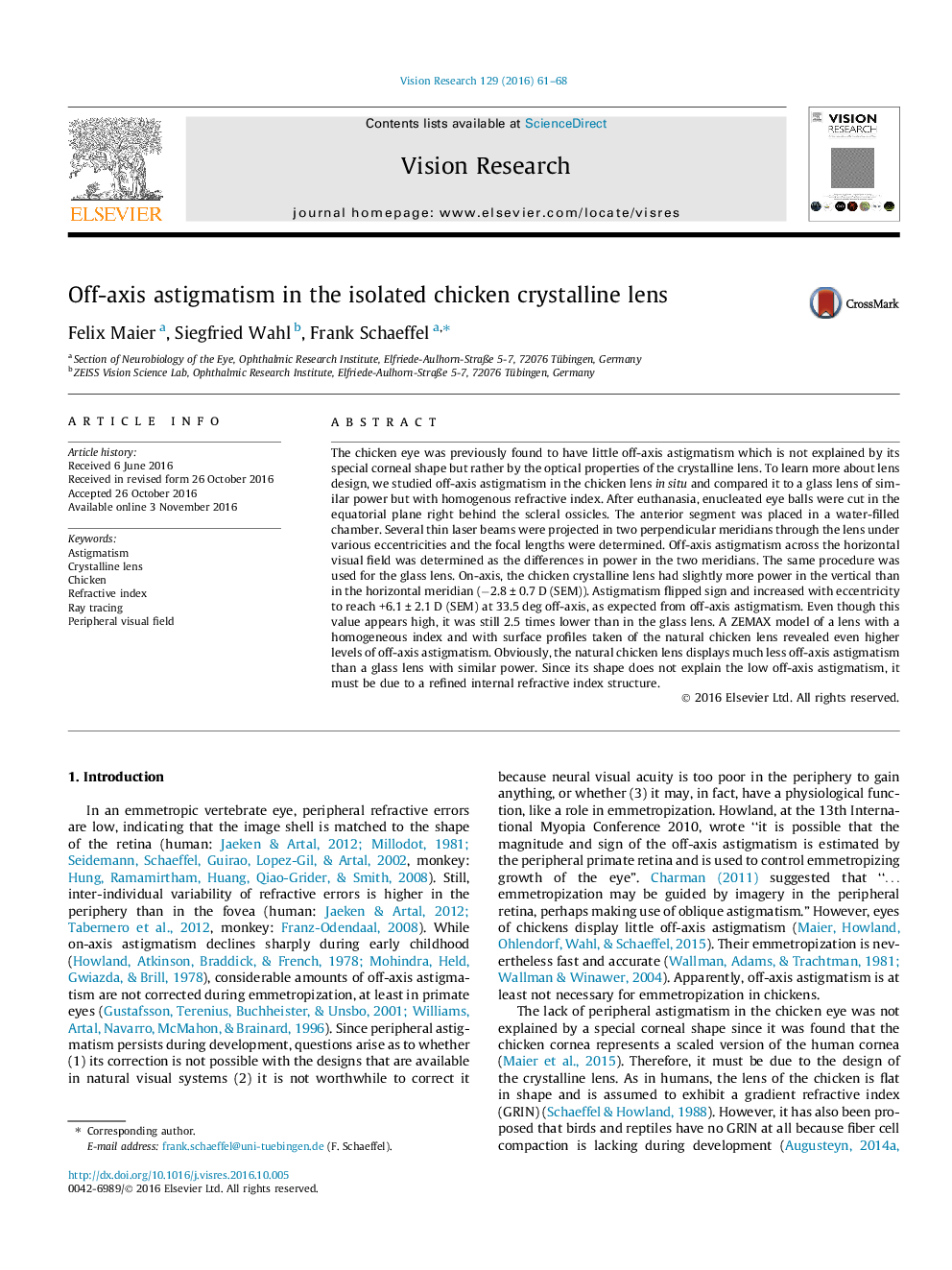| Article ID | Journal | Published Year | Pages | File Type |
|---|---|---|---|---|
| 5705958 | Vision Research | 2016 | 8 Pages |
Abstract
The chicken eye was previously found to have little off-axis astigmatism which is not explained by its special corneal shape but rather by the optical properties of the crystalline lens. To learn more about lens design, we studied off-axis astigmatism in the chicken lens in situ and compared it to a glass lens of similar power but with homogenous refractive index. After euthanasia, enucleated eye balls were cut in the equatorial plane right behind the scleral ossicles. The anterior segment was placed in a water-filled chamber. Several thin laser beams were projected in two perpendicular meridians through the lens under various eccentricities and the focal lengths were determined. Off-axis astigmatism across the horizontal visual field was determined as the differences in power in the two meridians. The same procedure was used for the glass lens. On-axis, the chicken crystalline lens had slightly more power in the vertical than in the horizontal meridian (â2.8 ± 0.7 D (SEM)). Astigmatism flipped sign and increased with eccentricity to reach +6.1 ± 2.1 D (SEM) at 33.5 deg off-axis, as expected from off-axis astigmatism. Even though this value appears high, it was still 2.5 times lower than in the glass lens. A ZEMAX model of a lens with a homogeneous index and with surface profiles taken of the natural chicken lens revealed even higher levels of off-axis astigmatism. Obviously, the natural chicken lens displays much less off-axis astigmatism than a glass lens with similar power. Since its shape does not explain the low off-axis astigmatism, it must be due to a refined internal refractive index structure.
Related Topics
Life Sciences
Neuroscience
Sensory Systems
Authors
Felix Maier, Siegfried Wahl, Frank Schaeffel,
